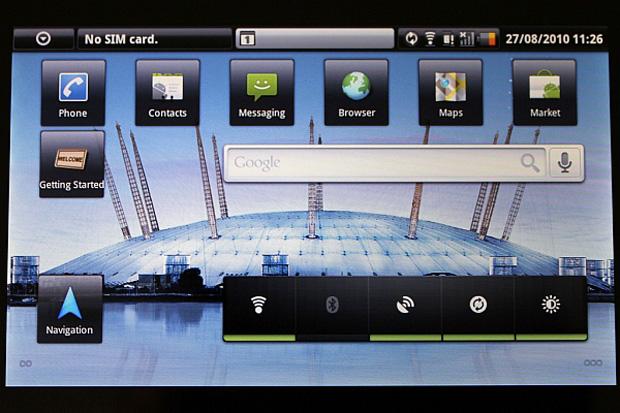Imagine Urban’s library in the midst of exam week, clusters of students huddled around desks, sipping warm coffee as they furiously try to cram as much information into their brains as possible. Others, done for the day, groan under the weight of their backpacks, which are laden with heavy textbooks.
Now, fast-forward five years: Instead of using textbooks or magazines for non-Internet research, students are scrolling the pages of tablets and e-readers, and carrying textbooks electronically, not on their backs.
Tablet computers and e-readers are not a new concept; in fact, Apple has been making tablet computers since 1993 Newton MessagePad. However, a new wave of game-changing devices, such as Apple’s iPad, Amazon’s Kindle, and the Dell Streak, have changed the industry forever.
Sarah Levin, Urban’s librarian, believes that e-readers and tablet computers might not change on Urban student’s reading experience right away because most teenagers prefer print.
However, she hopes these devices will “change the demise of (the)newspaper into the resurrection of the newspaper” — albeit in a digital form.
Following is a quick look at three of the most popular tablet computers on the market, so that you can decide whether or not one of these new gadgets is for you.
iPad:
• Background: Since its debut on April 3rd, the iPad has been tremendously successful: it sold 300,000 iPads on the release date, 1 million by May 1, and 3 million less than three months after its release.
• The flash-forward: A rumored 7-inch iPad may be released by the holiday season, as they hope to bridge the gap between the iPad and the iPhone.
• Key Pros: Backlit screen and sharp resolution make this a great choice for reading or watching movies and television; easy to use, fast Internet browser with 3G capability, a variety of uses, customizable using the variety of apps.
• Cons: cost (an iPad with 3G is $629); heavy weight (at 1.5 pounds, it weighs more than a paperback book). And, according to the Huffington Post, it is a device that people are “not sure they need, and aren’t certain how they’ll use”, cannot multitask, no Flash Player, meaning it is incapable of playing videos on the web browser.
• Stats: 9.56 by 7.47 inches, 1.5 pounds; 10 hours of battery power, basic model starts at $499.
Kindle “3” (Next Generation — according to amazon.com)
• The Kindle knows exactly what it is: An e-reader. While some people are unsure as to exactly what they’re supposed to use the iPad for, the Kindle is straightforward. By concentrating on the best possible reading experience, instead of distracting the user with extra technology, the Kindle becomes essential to an avid reader in ways that the iPad is not.
• Background: The 3rd generation Kindle was released this summer.
• The flash-forward: The price, already relatively cheap at $139, will probably decline in the next year.
• Key Pros: e-ink screen (basically, electronic paper) which makes it possible to read in direct sunlight as well as preventing a headache-inducing glow; small, light, low price ($139), free 3G wireless, 60 second download times for new books, a single charge lasts one month with wireless off.
• Cons: only possible to get books from one source (Amazon); not a multitasking device.
• Stats: 7.5 by 4.8 inches; 8.7 ounces, 1 month of battery power without wireless on, basic model starts at $139.
Dell Streak:
• Background: The Dell Streak bridges the gap between a cell phone and a tablet computer using Android technology and is compatible with an optional AT&T contract. After an August 16th release date, the Streak has performed relatively well, although nothing near the sales of the iPad.
• The flash-forward: The current technology (Android 1.6) is expected to be updated to Android 2.2 within the next few months, although no exact date has been released.
• Key pros: The smaller size of the Streak makes it easier to carry; an integrated cell phone makes it a hybrid, has a battery life of more than 12 hours, and is able to use 3G, Wi-Fi and Bluetooth.
• Key cons: The small size makes it less enjoyable to type, read , and watch movies and television on.
• Stats: The Streak is 5 inches wide and 3.1 inches high; it is a full-functioning 3G phone, weighs 7.7 ounces, basic price states at $299.99 with a 2-year AT&T contract, and $549.99 without a contract. In addition, a brightness sensor helps adjust screen brightness to extend the 12-hour battery life.


